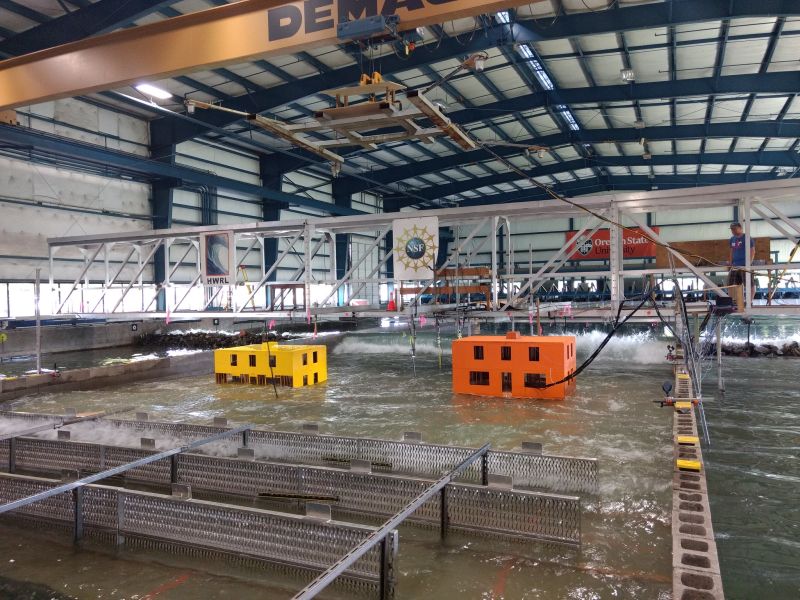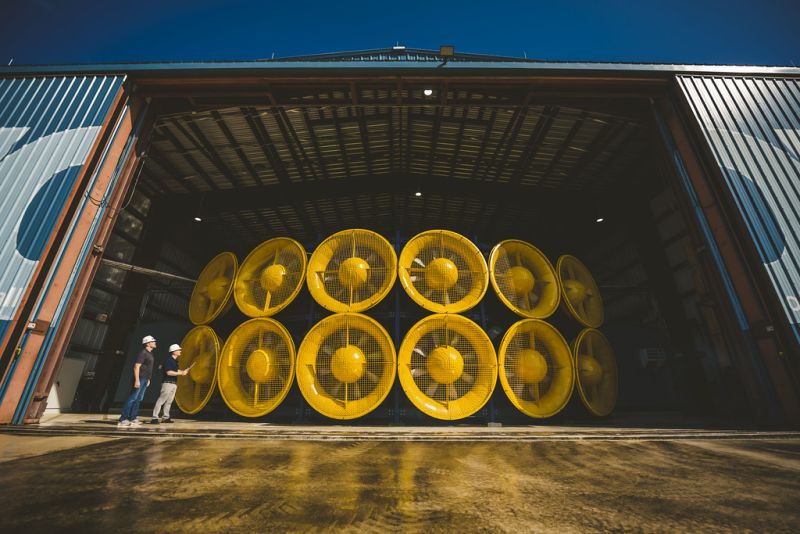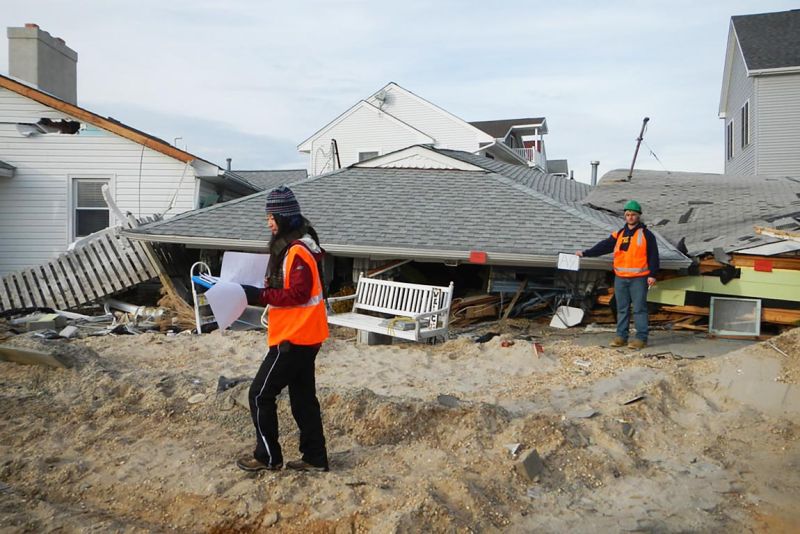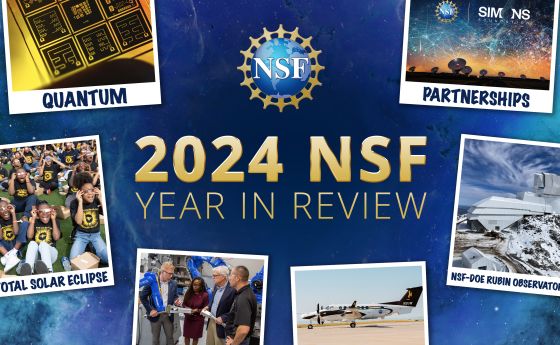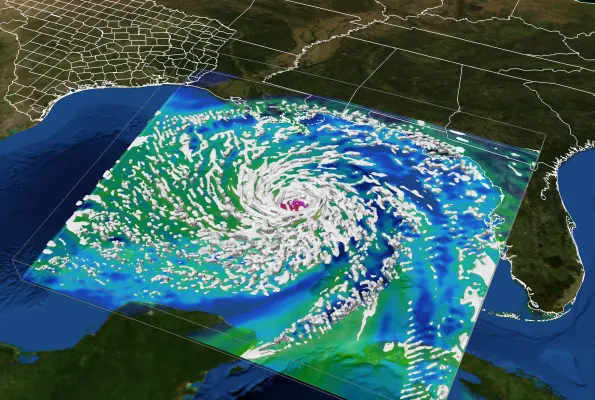
From the lab to the coast, NSF provides critical support to prepare for hurricanes
In 2021, researchers from the National Center for Atmospheric Research, or NCAR, began test-piloting the Hurricane Risk Calculator web app. The goal of the app is to provide detailed forecasts of potential structural damage in order to help users make informed decisions before and during a storm. The researchers are testing the first phase of the app, wind forecasts, and plan eventually to include other hurricane risks such as storm surge and flooding. As users enter addresses and details about homes during this test-piloting, from the age of a house to the roofing material used, they are helping to calibrate the app and validate its outputs.
"Storm hazards affect each structure differently. It's possible that one family may need to evacuate, while their neighbors may be able to stay," said NCAR scientist and project lead Jonathan Vigh. "I can imagine a future where, based on tailored risk outputs, local emergency officials could evacuate people by address rather than by zip code or surge zone."
NCAR is a Federally Funded Research and Development Center sponsored by the U.S. National Science Foundation. The Hurricane Risk Calculator project is a result and extension of NSF's long history of laying the groundwork that helps researchers better understand and predict hurricanes and helps communities prepare for and weather them. Highlighted below are a few examples of work that NSF is driving as we enter Hurricane Preparedness Week.
Providing the foundation for hurricane research
Preparing is key to mitigating the havoc natural disasters such as hurricanes can cause to communities. To better forecast both storms and the damage they are likely to inflict, researchers rely on infrastructure made possible through NSF, for example, the Natural Hazards Engineering Research Infrastructure, or NHERI, facilities. These experimental facilities provide the backbone for engineering innovations, including changes to building design codes (through research at Florida International University) and model buildings that can help predict real-world structural damage (tested at the O.H. Hinsdale Wave Research Laboratory at Oregon State University).
Along with facilities, NSF investments have led to more accurate forecasting and simulation tools for researchers to predict when, where and how storms will land. One such tool, the Hybrid WRF Cyclone Model, developed by NCAR scientists, enables researchers to "steer" simulated hurricanes — placing fully formed hypothetical storms exactly where researchers want and forcing them to make landfall in diverse ways. Because hurricanes can change track as they develop – such as in late 2012, when Hurricane Sandy unexpectedly turned west toward New Jersey — this level of control can be invaluable for planning and preparing for what-if scenarios.
Supporting practical research for communities
While the tools mentioned above can help in predicting the structural and economic impact of hurricanes, understanding community response is critical to saving lives. The Weather Risks and Decisions in Societies, or WRaDS, program works to understand how weather and climate risks affect behavior, particularly focusing on how information is conveyed and how decision making is influenced.
"For atmospheric scientists, sometimes we think that the weather, the climate information that we provide, is the only thing or the most important thing, and often it's not," said researcher Rebecca Morrs in a presentation for Columbia Climate School. "Another important point is that different people interpret information and risk differently. So there's a lot of diversity in terms of the information that people want, that they can use, that they need and the kind of decisions they're making."
When storms approach, cultural background, past experiences with hurricanes and worldview all shape how people respond to hurricane messaging, including whether they will evacuate. Learning the best ways to communicate information that is trusted and useful — through not only scientists but government officials, news media and social platforms — makes the work of WRaDS essential to hurricane preparedness.
Beyond WRaDS, NSF has also partnered with the Department of Energy and Department of Homeland Security to create the Civic Innovation Challenge. One focus of the program helps advance research that can improve the resiliency of communities in the face of natural disasters, including hurricanes. Projects include improving food distribution during disasters, post-flood resilience for low-income households, and the unique challenges rural communities face.
Learning from the aftermath
Hurricanes can have long-term effects where they strike, both on human communities and the ecology of entire regions. NSF advances research on both fronts, through projects big and small. For example, the Hurricane Ecosystem Response Synthesis Network aims to connect researchers from a broad range of disciplines, including ecology, economics, sociology and resource management, to develop a holistic understanding of how ecosystems respond to tropical storms. Similarly, research into the rise in hurricane activity and the disproportionate economic impact hurricanes have on lower-income households is filling the gaps of our understanding of how storms impact us, from individual households to regions.
Learn more about preparing yourself, your family and your community for hurricanes with the Hurricane Preparedness Week resources provided by the National Oceanic and Atmospheric Administration and learn more about NSF's contributions to hurricane research at NSF.gov.

